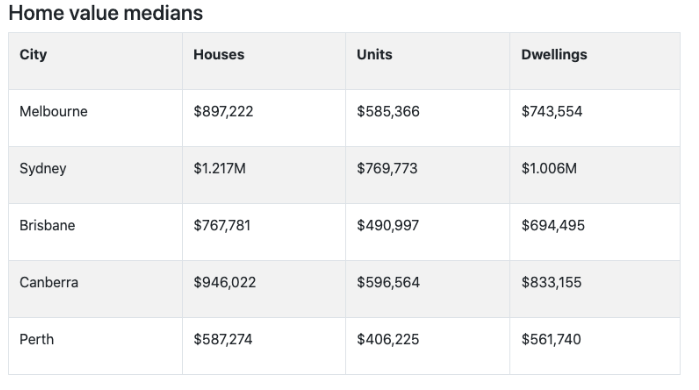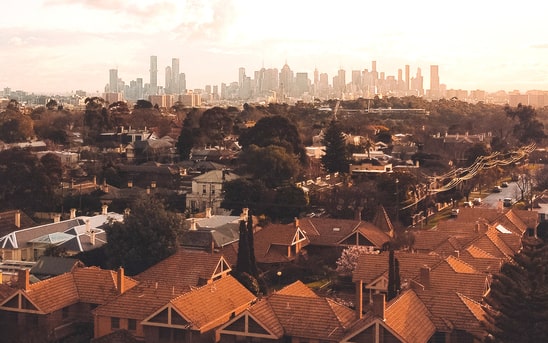
Has Australia’s housing downturn come to an end?
Interest rates have been the hot topic of conversation among homebuyers for a year now. In May 2022 the RBA made its first tactical move, raising the official rate for the first time since November 2010. And it’s all we’ve seemed to hear about since – with much speculation as to whether the RBA will increase rates or hit “pause”.
As a result of rate increases, home values slipped across the country for the best part of 2022, only beginning to rebound modestly in recent months. Some industry experts believe the worst of the rates hikes could be behind us, while others are taking a ‘wait and see’ approach. In any case the property market appears to be reacting with optimism, with June’s CoreLogic Home Value Index showing the strongest monthly growth since November 2021.
Capital city uplift
Figures released by CoreLogic at the start of June showed the third monthly rise in national housing values with each of the four largest capitals recording a lift over the quarter. After falling -9.1% between May 2022 and February 2023, have Australian housing values finally bottomed out? “Our anticipation is the market will continue to level out on the expectation that interest rates have peaked and the imbalance between housing demand and supply will persist for some time yet,” Mr Lawless wrote in the May Home Value Index (HVI), citing the significant lift in overseas migration will likely put further strain on availability.
Eleanor Creagh, senior economic at PropTrack, said interest rates cannot solely be held responsible for market sentiment. “This stabilisation in the housing market has occurred despite further rate rises. It appears the impact of interest rate rises is being counterbalanced by stronger housing demand and tight supply conditions,” she said in response to the May rate rise. “The surprise increase in interest rates is unlikely to outweigh these factors, though may dampen confidence in the nascent recovery and in the near-term impact the pace of monthly price increases.”
Ultimately, housing prices are on a knife’s edge while larger economic factors continue to fluctuate. “The path for home prices in the months ahead will be influenced by many factors, including the strength in housing demand, the level of supply hitting the market, as well as the trajectory of interest rates,” Ms Creagh added.
Dwelling values over the quarter
CoreLogic’s national HVI increased by 1.2% in May, following a 0.5% lift in April to be 2.3% higher over the quarter. The combined capital values have improved by 2.8% over the past three months while the combined regions improved by 0.8% during the same time period.
All signs are pointing to the fact the housing market has moved through an inflection point according to Mr Lawless. “Not only are we seeing housing values stabilising or rising across most areas of the country, a number of other indicators are confirming the positive shift. Auction clearance rates are holding slightly above the long run average, sentiment has lifted, and home sales are trending around the previous five-year average,” said Mr Lawless.
Sydney
Sydney is by far leading the positive turn in housing conditions, albeit coming from the deepest price slump. While the median dwelling value in the Harbour City is up 4.5% for the quarter, it’s still -13.8% down since its January 2022 Peak – the greatest peak to trough change in the country. Investors could take note that Sydney’s current gross rental yield sits at 3.2%.
Melbourne
Home to the mildest pandemic cycle in the country, the heavily locked down city experienced a 10.7% increase during that time. After the Victorian capital’s housing values peaked in February 2022, the market fell -9.6% to hit its trough by February this year. Now in recovery, Melbourne values have crept up 1.6% this quarter. In Melbourne, the gross rental yield is currently 3.5%.
Brisbane
After going through one of the most impressive Covid booms in the country as values soared an incredible 41.8%, Brisbane’s peak arrived in June 2022. The bottom of the local market came in February this year with a -11% cyclical fall, but values have since corrected, recording an increase of 1.8% over the quarter. For the Queensland capital, gross rental yields are sitting at 4.3%.
Canberra
Home values skyrocketed 38.8% during the post-pandemic run with a peak arriving in Canberra by June last year. The city has since seen values come off -9.5%, recording -0.1% this quarter and is now in its “cyclical trough” accord to CoreLogic data. Australia’s capital has a current gross rental yield of 4.1%.
Perth
The West Australian capital saw dwelling values jump by 24.5% during the recent boom. The peak to trough (July 2022 to February 2023) fall in Perth was only mild with a -0.9% change and since then values are already up by 2.4% in the last quarter. Home to the second highest rental yield in the country (only behind Darwin’s at 6.4%), Perth’s is sitting at 4.9%.

Note: all figures in the city snapshots are sourced from: Core Logic’s national Home Value Index (June 2023)
If you have any questions or need any information please give us a call on 039723 0522.



